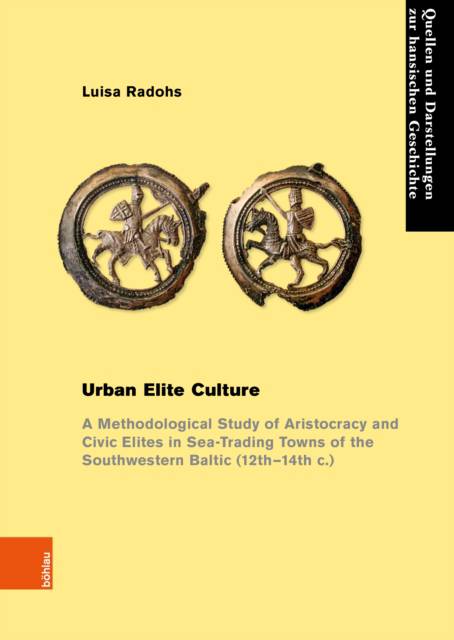
- Afhalen na 1 uur in een winkel met voorraad
- Gratis thuislevering in België vanaf € 30
- Ruim aanbod met 7 miljoen producten
- Afhalen na 1 uur in een winkel met voorraad
- Gratis thuislevering in België vanaf € 30
- Ruim aanbod met 7 miljoen producten
Zoeken
Urban Elite Culture
A Methodological Study of Aristocracy and Civic Elites in Sea-Trading Towns of the Southwestern Baltic (12th-14th C.)
Luisa Radohs
€ 155,45
+ 310 punten
Uitvoering
Omschrijving
Medieval towns were vibrant and complex social environments where diverse groups and lifestyles encountered and influenced each other. Surprisingly, in the study of urban archaeology, the aristocracy, one of the leading and most influential groups in medieval society, has so far been neglected. This book puts "aristocracy in towns" on the archaeological research agenda. The interdisciplinary and comparative study explores the significance and representation of aristocrats and their interaction with civic elites in sea-trading towns of the southwestern Baltic from the 12th to the 14th centuries. Essentially, however, the analysis of urban elite culture leads to discussion of a much more fundamental issue: the informative value of material culture for the investigation of social conditions. The book provides new archaeological approaches to the study of social differentiation in towns, and contributes to a deeper understanding of the complexity of urban social structures.
Specificaties
Betrokkenen
- Auteur(s):
- Uitgeverij:
Inhoud
- Aantal bladzijden:
- 691
- Taal:
- Engels
- Reeks:
- Reeksnummer:
- nr. 78
Eigenschappen
- Productcode (EAN):
- 9783412528607
- Verschijningsdatum:
- 9/10/2023
- Uitvoering:
- Paperback
- Formaat:
- Trade paperback (VS)
- Afmetingen:
- 170 mm x 239 mm
- Gewicht:
- 664981 g

Alleen bij Standaard Boekhandel
+ 310 punten op je klantenkaart van Standaard Boekhandel
Beoordelingen
We publiceren alleen reviews die voldoen aan de voorwaarden voor reviews. Bekijk onze voorwaarden voor reviews.








